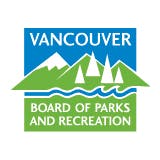Share Translations on Facebook
Share Translations on Linkedin
Email Translations link
This page contains important information about mobility in Stanley Park. Please use the automatic translation tool, located at the top-right of this page.
The automatic translation tool* is available for: Traditional Chinese [繁體中文] Simplified Chinese [简体中文] Punjabi [ਪੰਜਾਬੀ], Filipino [Tagalog], Vietnamese [Tiếng Việt], French [Français], Korean [한국어], Japanese [日本語] and Spanish [Español].
*Note: the translation service on our website is hosted by Google Translate. As this is a third-party service, we cannot guarantee the quality or accuracy of any translated content.
此頁包含有關 史丹利公園流動性 的重要資訊。請使用位於本頁面右上角的自動翻譯工具。*備註:我們網站上的翻譯服務由谷歌翻譯提供。由於這是第三方的服務,我們無法保證任何翻譯內容的質素或準確性。
此页包含关于史丹利公园公园流动性的重要信息。请使用位于本页面右上角的自动翻译工具。*备注:我们网站上的翻译服务由谷歌翻译托管。鉴于这是第三方服务,我们无法保证任何翻译内容的质量或准确性。
Naglalaman ang pahinang ito ng mahalagang impormasyon tungkol sa paggalaw sa Stanley Park. Pakigamit ang awtomatikong tool para sa pagsasaling-wika, na nasa itaas na kanan ng pahinang ito. *Tandaan: ang serbisyo sa pagsasaling-wika sa website namin ay pinagagana ng Google Translate. Dahil ito ay third-party na serbisyo, hindi namin magagarantiya ang kalidad o pagkatumpak ng alinmang naisaling-wikang nilalaman.
ਇਸ ਪੰਨੇ 'ਤੇ ਸਟੇਨਲੀ ਪਾਰਕ ਵਿੱਚ ਗਤੀਸ਼ੀਲਤਾ ਬਾਰੇ ਮਹੱਤਵਪੂਰਨ ਜਾਣਕਾਰੀ ਹੈ। ਕਿਰਪਾ ਕਰਕੇ ਇਸ ਪੰਨੇ ਦੇ ਸਿਖਰਲੇ-ਸੱਜੇ ਪਾਸੇ ਸਥਿਤ ਆਟੋਮੈਟਿਕ ਅਨੁਵਾਦ ਟੂਲ ਦੀ ਵਰਤੋਂ ਕਰੋ।*ਨੋਟ: ਸਾਡੀ ਵੈੱਬਸਾਈਟ 'ਤੇ ਅਨੁਵਾਦ ਸੇਵਾ Google Translate ਦੁਆਰਾ ਹੋਸਟ ਕੀਤੀ ਗਈ ਹੈ। ਕਿਉਂਕਿ ਇਹ ਇੱਕ ਤੀਜੀ-ਧਿਰ ਦੀ ਸੇਵਾ ਹੈ, ਅਸੀਂ ਕਿਸੇ ਵੀ ਅਨੁਵਾਦ ਕੀਤੀ ਸਮੱਗਰੀ ਦੀ ਗੁਣਵੱਤਾ ਜਾਂ ਸ਼ੁੱਧਤਾ ਦੀ ਗਰੰਟੀ ਨਹੀਂ ਦੇ ਸਕਦੇ ਹਾਂ।
Trang này chứa thông tin quan trọng về hoạt động đi lại trong Công viên Stanley. Vui lòng sử dụng công cụ dịch tự động, nằm ở trên cùng bên phải của trang này. * Lưu ý: dịch vụ dịch thuật trên trang mạng của chúng tôi được lưu trữ bởi Google Dịch. Vì đây là dịch vụ của bên thứ ba, chúng tôi không thể bảo đảm phẩm chất hoặc độ chính xác của bất cứ nội dung được dịch nào.
Esta página contiene información importante sobre movilidad en Stanley Park. Por favor, utilice la herramienta de traducción automática, situada en la parte superior derecha de esta página. *Nota: el servicio de traducción de nuestro sitio web se lleva a cabo con Google Translate. Al tratarse de un servicio de un tercero, no podemos garantizar la calidad ni la exactitud del contenido traducido.
이 페이지에는 Stanley Park 이동성에 대한 중요한 정보가 포함되어 있습니다. 이 페이지의 오른쪽 상단에 있는 자동 번역 도구를 사용하십시오. *참고: 당사 웹 사이트의 번역 서비스는 Google Translate에서 제공합니다. 타사 서비스이므로 번역 콘텐츠의 품질이나 정확성을 보장할 수 없습니다.
Cette page renferme d’importants renseignements sur la mobilité dans Stanley Park. Veuillez utiliser l'outil de traduction automatique, en cliquant en haut à droite de cette page. *Remarque : Le service de traduction de notre site Web est assuré par Google Translate. Comme il s'agit d'un service externe, nous ne pouvons pas garantir la qualité ni l'exactitude du contenu traduit.
Share Project background on Facebook
Share Project background on Linkedin
Email Project background link
With well over 18 million visits per year, Stanley Park is one of the most popular and well-used city parks in Canada. Located at the heart of downtown Vancouver, Stanley Park plays a major role in the overall traffic network of the region.
Stanley Park is also one of the top tourist destinations in Vancouver and British Columbia, with approximately 39% of all visitors to Vancouver making it a stop on their priority list. There are attractions in the park that draw visitors and locals alike, and Park Drive as a perimeter feature connects several destinations and plays a central role in how people visit the park. The Mobility Study will consider the role the transportation system plays in supporting this network.
The Stanley Park Mobility Study stems from two initiatives in the park.
One is the need to study the use, efficiency and the potential future of the transportation network in the park, identified during the Stanley Park Comprehensive Plan process.
The other is a Park Board motion inspired by the “car-free” pilot project, and the increase in pedestrian and cyclist use of the park, in summer 2020. The car-free pilot was implemented in response to the Covid-19 pandemic. It was followed by the temporary bike lane pilot, beginning in summer 2021 through to today.
On June 8, 2020, the Park Board passed a motion to direct staff to: “explore the long term feasibility of reducing motor vehicle traffic in Stanley Park, including but not restricted to, reducing roadways to single lanes while maintaining access to the park, while increasing accessibility for those with disabilities.”
This motion established the need for the Stanley Park Mobility Study, separate from but informing the Comprehensive Plan.
Share Project purpose on Facebook
Share Project purpose on Linkedin
Email Project purpose link
The Stanley Park Mobility Study will examine the feasibility of different approaches for reducing vehicle traffic in the park through data collection, analysis and engagement. The project involves transportation planning experts, mobility data specialists, and economic specialists, supported by engagement with Park Stakeholders, and a multi-disciplinary team of Park Board and City of Vancouver staff.
The outcomes of this study will help support and inform future planning work, including the Stanley Park Comprehensive Plan, a long-range plan and 100-year vision for the park currently underway in partnership with Musqueam, Squamish and Tsleil-Waututh Nations. The Mobility Study will also help support many other goals and initiatives in the park through the following:
- Improve mobility patterns and safety throughout the park
- Understand priorities, park visitation pattern changes, and forecast trends
- More effectively manage service levels and resource allocations
- Help in the restoration of forest, wetland, and shoreline habitats and ecosystems and ensure the park's protection, restoration, and resiliency for future generations.





